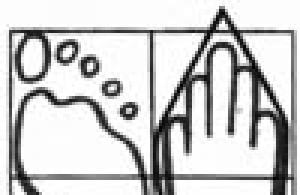"Spirit of Ecstasy", "Emily", "Silver Lady" or even "Ellie in a nightgown" - no matter how many names and funny nicknames were given to the statuette, which traditionally flaunts on the hood of a Rolls-Royce. The first such statuette was installed in 1911 by the exclusive order of Baron de Montague. The prototype for her was the image of his mistress - Eleanor Velasco Thornton. The figurine preserved the image of Eleanor for a whole century, but the girl's earthly life ended in a tragic way in her youth.


The fashion for figurines on bonnets came at the beginning of the 20th century. Initially, only aristocrats and the rich could afford such jewelry. Later, car firms realized the appeal of such figurines and began to use them as distinctive sign.

The author of the first statuette was the sculptor Charles Sykes, for him "Ellie" symbolized the love of speed, she was a tiny patron deity of the motorist, passionate about movement, adoring travel. Baron de Montagu, an avid car enthusiast and author of the first driving manual, was sure that the “Ellie” on the hood would bring him good luck.

The first version of the figurine created by Sykes was called "Whisper", as the half-naked girl stood with her finger pressed to her lips. The second received the modern name "Spirit of Ecstasy". The appearance of Baron de Montagu in public driving his car, decorated with a winged statuette, was considered in the world as another whim of a rich man. However, the figure was so good that many liked it. After a hundred years, the "Spirit of Ecstasy" has not lost its popularity.

A hundred years later, the first figurines have become collectibles, because each of them is unique. The process of their creation has always been painstaking. The figurine of the girl was cast from an alloy of tin or lead, bronze or stainless steel. The rich could even afford silver or gold talismans. Technological process making figurines was also not easy: they poured a figurine into a mold, which they later broke to get the blank. After it was polished with crushed cherry pits. That is why it is impossible to find two identical ones. Sykes personally signed the first sculptures; today they are of particular interest to antiquarians.

Henry Royce - one of the founding brothers of the legendary automotive company- wary of the idea of decorating the hood with figurines. For a long time he resisted the fact that at least something violated the laconic appearance auto. However, over time, even Royce recognized that the "Spirit of Ecstasy" is worthy of becoming a symbol of Rolls-Royce cars. True, it is significant that he never installed “Ellie” on the hood of his car.

As for the love story of the baron and Eleanor, it turned out to be tragic. In 1915, the baron invited his mistress on a trip to India. It seemed that the moment had come when they could finally be together without hiding their relationship. However, on the way to distant shores, a terrible tragedy occurred: off the coast of Crete, the liner, on which the travelers were, was torpedoed by a German submarine. Everything happened at lightning speed: the ship went under water in a few minutes, and more than 300 passengers out of 500 on board died before they could reach lifeboats. The German submarine acted in gross violation of the rules, which led to the tragedy: a warning shot was not fired.
In contact with
09.12.2016, 17:17 25935 0 Alexandra Alexandra
Where did the trend come from to install a figurine on the hood of a car as an emblem? Perhaps this is from the time when the most protruding part of the ships was decorated with rostra - nasal figures. For a ship it was very important element. Even in ancient Rome, victors removed rostra from fallen ships as a trophy, symbolizing the protection or favor of the gods.
This is how the figurines on the radiators began to be positioned as a kind of amulet or self-expression of the owner. Be that as it may, but at all times there was a fashion to decorate cars with nasal sculptures, mascots. However, Henry Royce despised this hobby and became furious when he met cars of his brand with a figure on the hood.
The first figurine on the hood of a Rolls-Royce appeared in 1911.
By order of Baron Montagu, his fellow sculptor Charles Robinson Sykes made a figurine called "Silver Ghost", which means "Silver Ghost".
The baron was famous, handsome and wealthy. He was an enthusiast automotive technology and a close friend of Charles Rolls and engineer Frederick Royce, the founders of Rolls-Royce.
Baron Montague had a favorite car and a beloved woman. So he came up with the idea to place a female figure on the hood of his Rolls-Royce, the model for which he chose the most beautiful girl, his secretary and mistress - Eleanor Velasco Thornton.

And then a car appeared on the streets of London with a beautiful figurine in the form of a half-naked woman. with hands thrown backrobe fluttering in the wind. Many did not appreciate the act and considered it a frivolous whim of the baron.
John Montagu was a member of the high society of England. On his Rolls-Royce, he drove King Edward, and it was his car with a double "R" that was the first in the history of the brand to drive into the gates of the English Parliament.
Later, the creators of Rolls-Royce liked the sculpture so much that they asked the baron for permission to use the mascot to decorate all the cars produced by the company. Over its century-old history, the figurine has acquired many different names. Among them - "The Spirit of Ecstasy", "The Spirit of Delight", "Silver Lady", "Emily", "Flying Lady" and even one funny nickname"Ellie in the nightgown."

At first, the "Spirit of Ecstasy" was offered as an option, and later - serially for all "Rolls-Royces", although Henry Royce did not like such "trinkets". Later, he himself agreed that the sculpture “Spirit of Ecstasy” was worthy of a car under his name, but until the end of his days he still drove without any figures on the radiator, believing that they violate the smoothness of the line and silhouette of the car.

Each Spirit of Ecstasy figurine was made by hand. Casting was carried out in accordance with the thousand-year-old "principle of the lost form." Officially referred to as "lost wax casting", this technique requires the mold to be destroyed in order to retrieve the workpiece. This explains why no figure is an exact copy of another. Until 1951, the monogram of Charles Sykes flaunted at the bottom of each of the unique copies. The first figurines personally signed by Sykes still belong to prestigious collectibles today. The first figurines were cast from babbitt, later - from bronze and chrome-plated stainless steel, but by special order, figurines were made of silver, gold, and even tempered glass with backlight. All figurines were polished by hand with ground cherry pits.

There were several modifications of the figurine, one of which, "kneeling", was produced since 1934. This was due to the fact that, according to Muslim laws, a woman did not have the right to go ahead of a man.
Returning to the story of Eleanor and the Baron, let's say that their romance was short-lived. In 1915, the lovers decided to visit India, choosing the Persia ship for the trip.
On November 30, a German submarine attacked the ship. The consequences were tragic: the ship began to sink rapidly. The crew did not even have time to launch the boats. There were 501 people on the ship, and 330 did not have time to escape. Baron Montague was saved by a miracle, and Eleanor Thornton died. But the name Eleanor, thanks to the baron, will remain in history forever, and her appearance is now inextricably linked with the legendary car.
None is as valuable and desirable as the Rolls-Royce figurine that flaunts on the hood. That is why the company's engineers have protected famous emblem with wings from potential intruders who want to steal it.
Every Rolls-Royce in standard equipment, since 1920, comes with an emblem on the hood, which is made of stainless steel. But as an option, this emblem can be ordered with a coating of 24 carat gold. Also at the request of the customer Rolls-Royce emblem can be made from other materials - for example, from a frosted crystal.
According to some reports, the cost of some exclusive emblems is about 10,000 dollars. Naturally, due to such value, the Rolls-Royce emblem is vulnerable to potential criminals. Unfortunately, until 2003 emblem thefts were recorded all over the world.
But since 2003, it began to equip some car models with a protective mechanism that prevents theft of the emblem.
So on the Phantom model of 2003, a spring mechanism was installed, which automatically, when touching the emblem, removes it under the bonnet space. As a result, stealing the emblem becomes almost impossible.
For drivers inside the car, a special button is provided to control the emblem, which allows you to both raise and lower the emblem. As a result, this measure of protection is that the famous and legendary "Lady with Wings" does not fall into the wrong hands.
He is part of a closed club of automakers who still use figurines to decorate the front of the car. Towering above the front of the hood, the figure of the "Spirit of Ecstasy" or as it is also called the "Flying Woman" is a legendary icon depicting a winged woman flying to meet the future. A small work of art attracts the attention of not only passers-by and connoisseurs, but also thieves who are not averse to profiting from a valuable thing. How English engineers coped with the theft of a unique thing, you can see in this video:
We will tell a slightly different story, which you hardly heard about before. The prototype of the inspired goddess of victory Nike was a real woman named Eleanor Velasco Thornton.
In the early 1900s, John Walter Edward Douglas-Scott-Montagu, 2nd Baron Montagu-Bewley, commissioned a hood ornament for his Rolls-Royce from English sculptor Charles Robinson Sykes. Sykes fulfilled the order, taking as a source a model - a certain Eleanor Thornton, Montagou's mistress.
To reflect the secret of the relationship, the first model of the figurine, designed by Sykes, put his index finger to his lips and received a proper name: "The Whisperer", "Whisper". It was a talisman that was supposed to protect the car and the owner from trouble on the road, and in life. Lord was so inspired by the idea that he wrote a poem about his new piece of jewelry:
I am a little, perky fairy,
The talisman is on the way.
I will give you a happy time
But I'll stick with reliability.
On the roads of the winding Rhone
Through the ethereal waves of the winds,
Past the charms of the lemon coasts
And golf clubs - I'm taking riders.
Calm down with a dream and a smile,
I will sometimes remind you of my beloved,
And I will rush you towards mistakes,
Or I will test you.
Your courage will please the fairy,
And under the joyful rustle of wheels
I will merge with fun
What my gray Rolls-Royce brings!
In splendid isolation, the fairy did not have to travel long. Automobile ornaments were in vogue at that time, and people with big money could order from the best sculptors copies of the statuette that they saw on the Rolls Montagu. So, the party of mascot lovers grew like a snowball. This was noticed even in the company. The automaker did not like the fact that the owners resorted to "handicraft" and make obscure "decorations" on the side, so he asked Sykes, the same sculptor who made the original, to design a talisman that could be installed on all production cars.

Sykes remade « The Whisperer" in Spirit of Ecstasy , removing the raised hand and making it what we know it today by naming it "by the graceful little goddess, the Spirit of ecstasy, who chose road trip with your supreme pleasure and delight on the nose of the carRolls-Royce to revel in the freshness of the air, and the musical sound of her fluttering drapery.".
Unfortunately, Thornton died shortly after the events described, in 1915. She went on a journey and was on board the SS Persia when the ship was torpedoed by a German submarine in the Mediterranean. The First World War began.
Sometimes beautiful fairy tales end quite in the spirit of thrillers. It happens in life...
Thanks to the spring mechanism at the base modern version The "spirit of ecstasy" at the slightest contact with an obstacle "leaves" down so as not to cause injury to the pedestrian. The button in the cabin helps to protect the elegant lady from kleptomaniacs - just press it, and the figure will hide in the bowels of the hood
The symbol of the British royal mark Rolls-Royce cars is the "Spirit of Ecstasy" - the goddess Nike leaning forward. This figurine adorns absolutely all models of the brand, being their integral attribute since 1923. Despite the fact that trading brand Rolls-Royce and the logo in the form of combined letters RR belong to BMW, the rights to the "Spirit of Ecstasy", in accordance with the terms of the sale of the company in 1998, remained with Volkswagen Group. The figurines are now made at Polycast Limited's factory in Southampton, separate from cars.
Leaning slightly forward, as if resisting the oncoming gust of wind, she personifies speed and beauty. The figurine was sculpted by English sculptor Charles Sykes in 1911.
Initially, the Rolls-Royce symbol was called "Personification of Speed". The figurine is also called the "Flying Lady". In addition, the figurine has a playful nickname "Ellie in a nightgown." The model for the statuette, made by the English sculptor Charles Sykes, was Eleanor Velasco Thornton. Thornton was the secretary and mistress of John Douglas-Scott-Montagu, 2nd Baron Montagu-Belew. He was an automotive enthusiast and friend of Charles Rolls and engineer Frederick Royce, the founders of Rolls-Royce.
Great Britain. Southampton, England. Polycast Limited worker Thomas O'Donoghue holds a flaming figurine mold. (REUTERS/Stefan Wermuth)
Initially, the figurine was cast from babbitt, later - from bronze and chrome-plated stainless steel, but by special order, figurines are made of silver and gold. The figurine is polished by hand with ground cherries.
There were several modifications of the figurine, one of which, "kneeling", was produced since 1934. This was due to the fact that the standing figurine distracted the driver from the road.
Great Britain. Southampton, England. Thomas O'Donoghue at the stove. (REUTERS/Stefan Wermuth)
This amazing Rolls-Royce bumper figurine is priced at $5,000.
There have always been legends about the figurine. Many, for example, believed that the "Spirit" was cast from pure silver. Therefore, it is not surprising that the statuette was often stolen by robbers. But that's in the past. The current "Phantom" figure is mechanized. When the owner leaves the car, the figurine disappears into the bowels grille. When hit, the "Spirit" also instantly hides - in case the car runs over a pedestrian.
At that time, it was fashionable to decorate cars with various figures. Henry Royce, however, despised the new hobby and became furious when he met cars of his brand with figurines on the hood. But in the end, the designer was convinced that it was better to produce "branded" talismans than to watch how the imagination of Rolls-Royce owners is limitless.
The figurine was designed in February 1911 and represented a girl whose dress is blown by a gust of wind on her winged arms. The figurine was waiting for world success: at one of the prestigious competitions, it was recognized as the best talisman in the world.









